Chesty Morgan beats a man to death with her 73-inch breasts. Two scientists build a rocket and fly to the moon only to find overweight, scantily clad girls with pipe cleaners sticking out of their heads. A husband is mysteriously stricken ill after a spaghetti and meatball dinner, forcing his wife into a life of prostitution to pay the medical bills. A man has a doctor graft his best friend’s penis onto his own, only to find himself uncontrollably raping women who wear gold earrings. These are just some of the bizarre plots in the films directed by the unheralded queen of exploitation- Doris Wishman. Doris wrote, directed and financed her own movies, which ran the gamut from nudist-camp films to “roughies’ (sleazy black and white shockers), even a “Mondo”-like documentary about sex changes. She was a true original- as a person, and as a filmmaker.
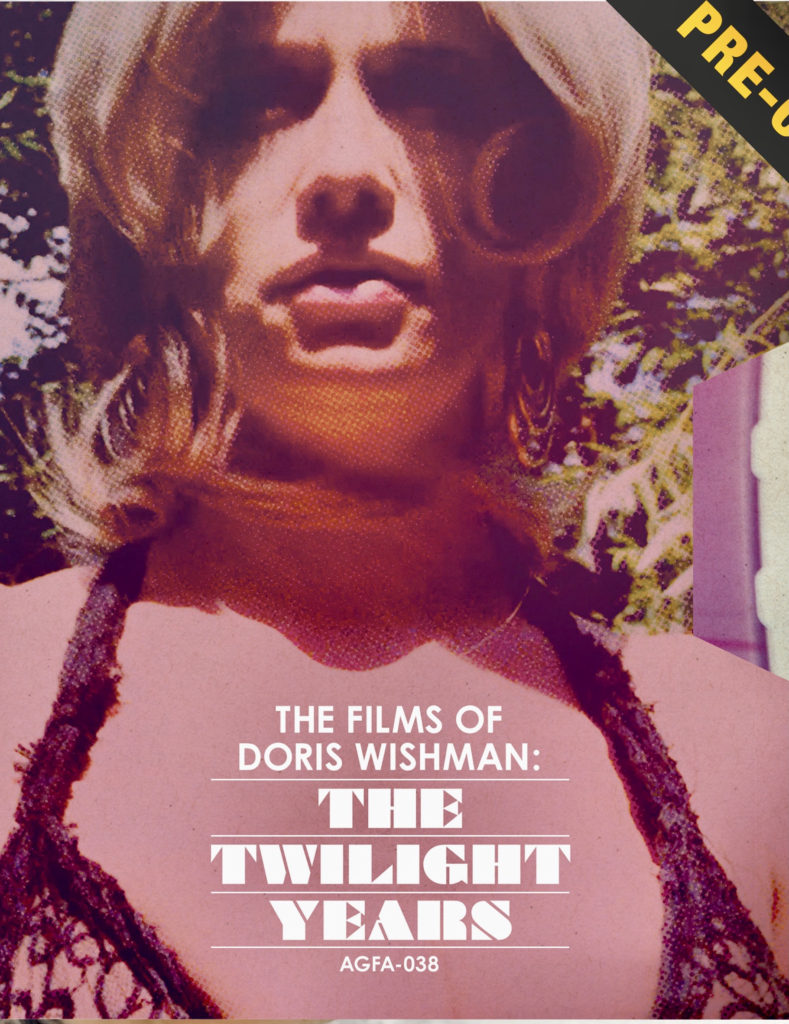
Out now in a gorgeously designed Blu-ray box set is The Films of Doris Wishman: The Twilight Years (Agfa & Something Weird), which will be part of several upcoming compilations devoted to her career. It was smart of them to start off with the later films- especially the ones featuring the frighteningly endowed Israeli stripper Chesty Morgan and the disarming pseudo-documentary about sex change- Let Me Die a Woman. These are great introductions to Wishman-mania.
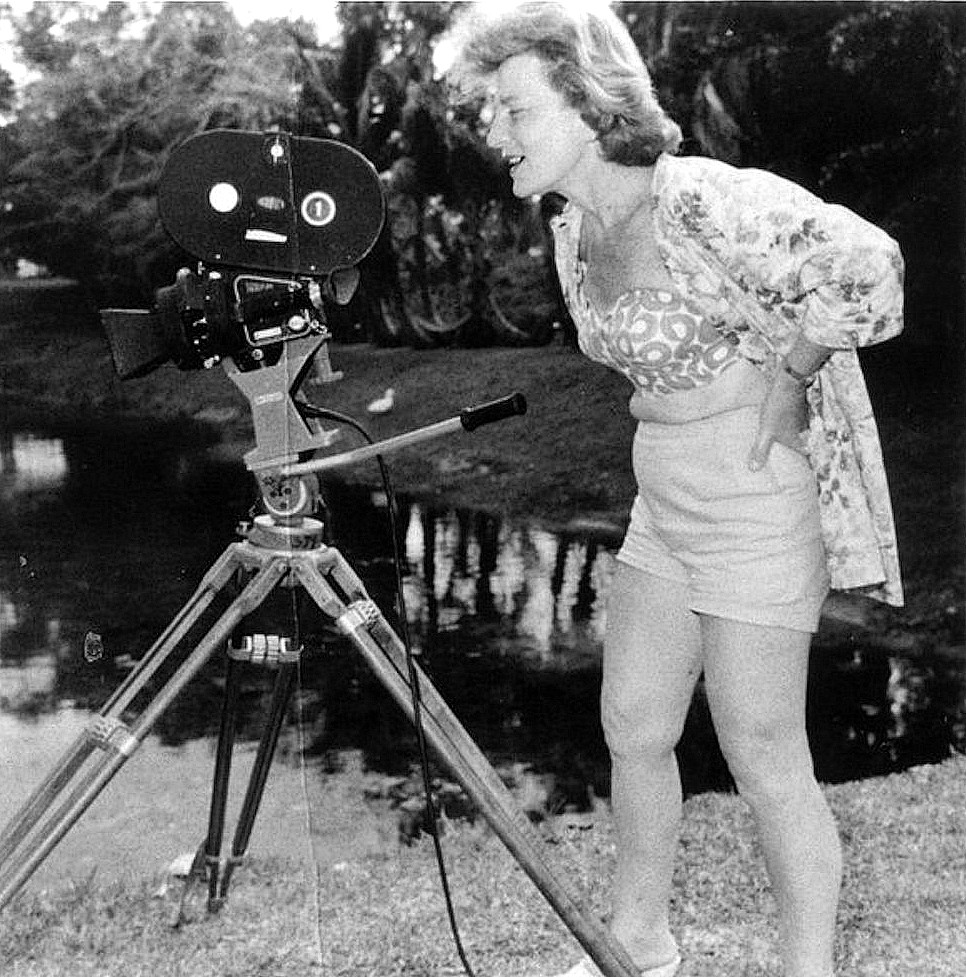
Doris didn’t set out to be a director. She attended the New York Avalon Drama School in the 50s, where she was classmates with one Shelley Winters. “I was a far better actress than she was,” Wishman proudly recalled. But instead of pursuing acting, she got a job working for producer/showman Joseph E. Levine, who imported foreign films like Fellini’s 8 ½ and Hercules with Steve Reeves. Dissatisfied with New York, Wishman and her husband moved to Florida, where he died suddenly. Grief-stricken and devastated, Wishman was encouraged by her sister, Pearl, to throw herself into work she knew.
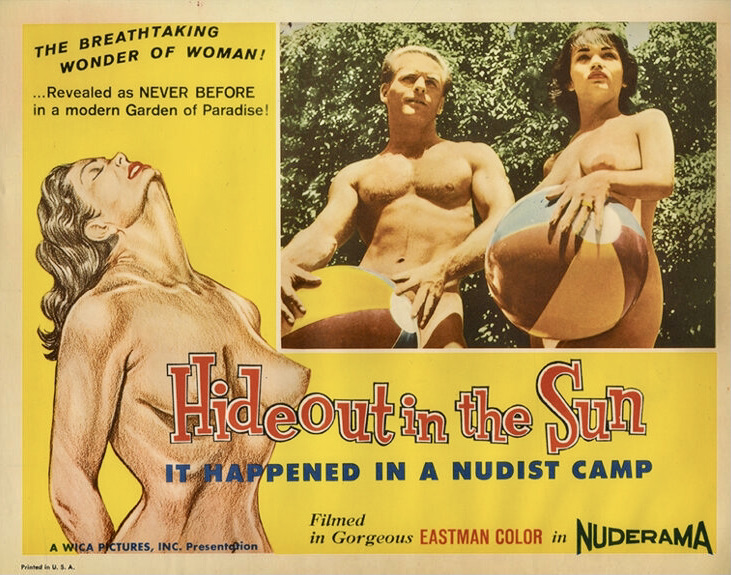
At the time, nudist camp films were an easy way to turn a buck, and had been cleared of obscenity in the courts. So, she borrowed $10,000 to make a film called Hideout in the Sun (1960) about two bank robbers who lay low at a nudist camp. With her niece Judith (who went on to write several memorable theme songs for her films), Wishman headed for the Sunny Palms Lodge Nudist Camp to meet with manager Zelda Suplee, who agreed to let her film there, provided that the entire film crew be naked. Wishman nervously called her cameraman that night with the news, only to have him cheerily reply, “That’s great!” Wishman, however remained clothed during the shoot.
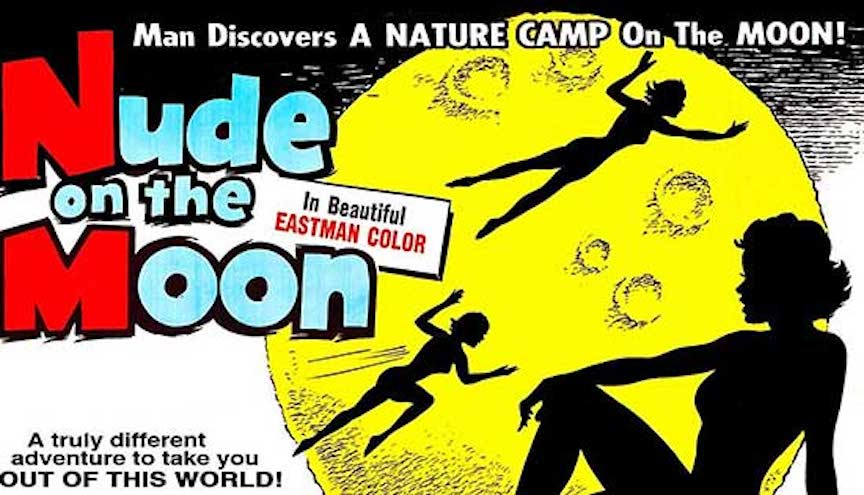
The film turned a profit and she churned out others like Diary of a Nudist (1961), Blaze Starr Goes Nudist (1962) (starring the infamous stripper and mistress of Louisiana governor Huey Long), Gentlemen Prefer Nature Girls (1963) and the wonderfully looney Nude on the Moon (1961). Bored with the nudist genre, Wishman returned to New York and started work on a series of sexy melodramas with lurid titles like Bad Girls Go to Hell (1965), Another Day, Another Man (1966), My Brother’s Wife (1966), A Taste of Flesh (1967) and Indecent Desires (1968).
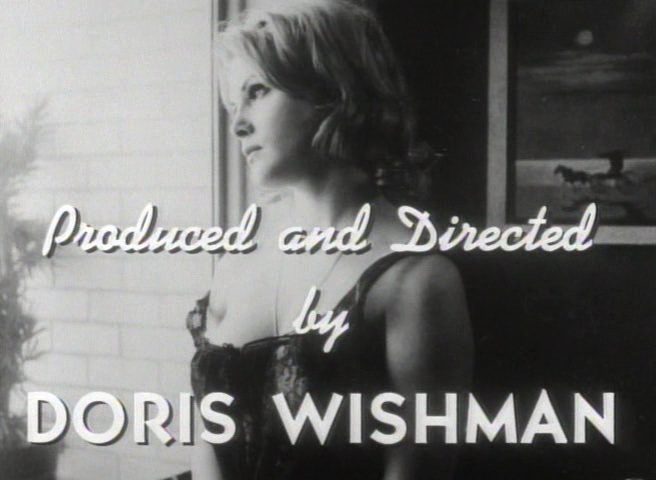
Wishman had a signature style of directing. Irritated by the actors’ nasal twangs, she post-dubbed all of her films and devised unusual ways of cutting away from actors while they talked to make it easy to synchronize later. At any given moment, the camera will zoom in on feet walking across a rug, or perhaps an ashtray, lamp, hanging plant, or the ceramic knickknacks arranged on the mantle of Wishman’s Queens apartment, where she shot many of her films. When actors talk on the phone, the receiver obscures their lips. And, in some films, she has shots of people thoughtfully reacting to what is being said, which can be maddening. These bizarre tactics- mixed with violence, busty women in lingerie and obligatory bubble-bath sequences- are Wishman’s trademarks. (She often used the pseudonym Louis Silverman in the credits). There’s an almost Jean-Luc Godard-like perversity to her technique. Even Michelangelo Antonioni, who used landscape, space and architecture to illustrate his character’s alienation, never dollied in on an out-of-focus squirrel for several minutes during a crucial bit of dialogue like Wishman did in The Sex Perils of Paulette (1965).
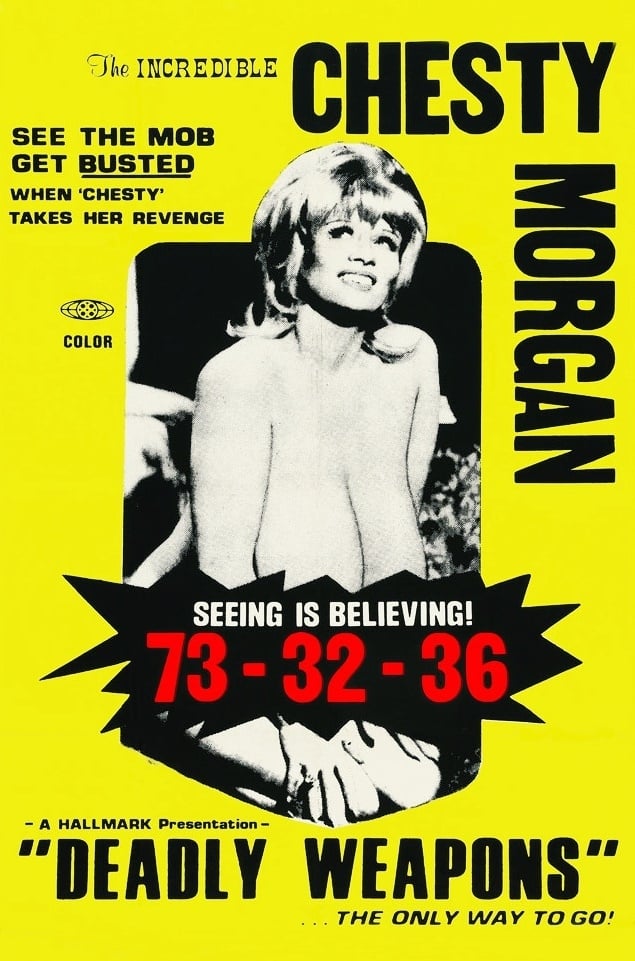
In the 70s, when I managed a movie theater in Provincetown I always threw a birthday film party at the theater around Labor Day, and one year I got a 35mm print of Deadly Weapons, which astounded, horrified and left my friends howling with delight and disbelief. As the years went by I was desperate to see more Wishman films and it wasn’t until Something Weird Video acquired all these rare prints of her movies that I was finally able to see many of her rarer offerings. In the late 1990s when I worked at Paper magazine I became obsessed with tracking Doris down and doing an interview with her. I found she was working the counter of a Pink Pussycat sex boutique in Florida and I called her there. She was wary and brusque on the phone at first, but I kept calling daily and she finally relented and gave me her home phone number and we set up a time for me to interview her. Over the course of several days we had a lively, informative, fun time as she relived her days as a filmmaker. I think she was pleasantly surprised that people even knew who she was and were fans of the films as I was. Paper magazine threw a big party for her in New York when the article came out and she met all these young female filmmakers who were enamored with her and heaped praise on her outsider status. I even presented her with a dozen roses and a card that read, “Screw Orson Welles– you’re the best!”
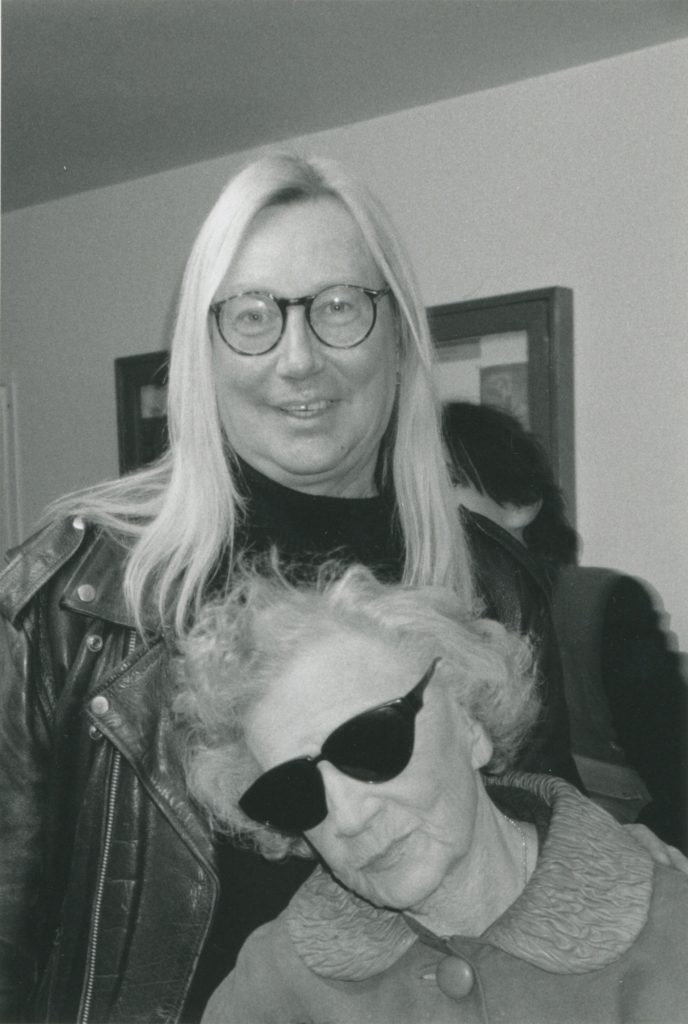
Doris actually had a great third act in her life. She was honored at the Chicago and NY Underground Film Festivals. Major directors attempted to get financing for films about her. Harvard University awarded Wishman an honorarium and held a symposium of her films. Michael Bowen has been exhaustingly finishing a major book about her life and career. And thanks to DVDs and now Blu-rays new fans have come to discover and revel in her films’ crackpot charms. She even completed some new films on video- Dildo Heaven (2002) about “Tess, Bess and Lisa- three girls who would do anything to satisfy their erotic desires!” And Satan Was a Lady (2001) starring the voluptuous Honey Lauren as a hooker with a heart of coal. Doris was always ablaze with ideas for new projects and proudly beamed when she described her plot ideas. In person she was feisty, irascible, flirtatious, exasperating and wonderful. Always in dark sunglasses, she was cantankerous but loveable. She appeared on the Conan O’Brien Show to talk about her missing cat and it was one of the most amazing, crackpot segments ever.

Michael Bowen helped facilitate the finishing of her last film Each Time I Kill (2007) about an unfortunate-looking high school girl who finds a magic locket that enables her to become more beautiful every time she commits murder. Exploitation director Joseph W. Sarno (Inga) helped complete the final scenes, and I got to appear, along with John Waters, as a moviegoer in one sequence.
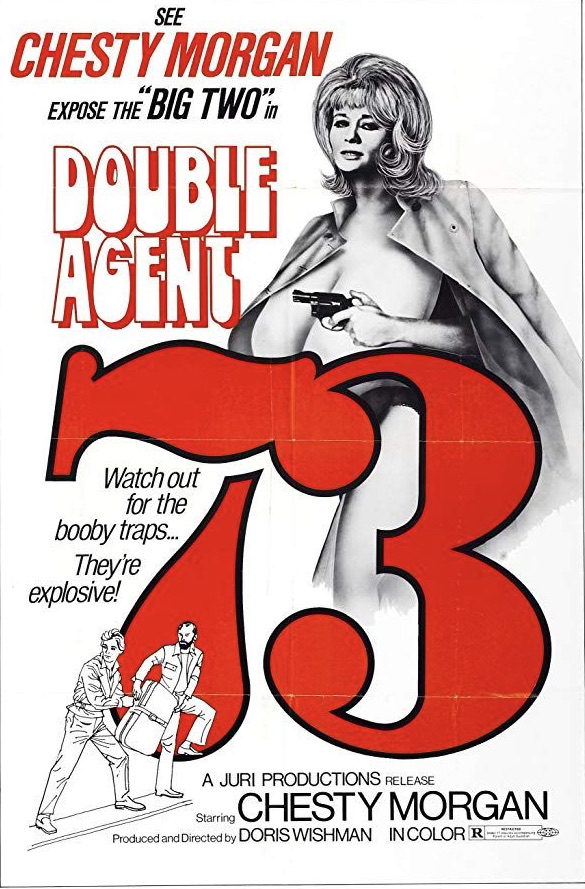
The new Blu-ray box set- The Films of Doris Wishman: The Twilight Years– is a lovingly assembled treat for fans. The films are 2k restorations from the original 35mm negatives and there are fresh, amusing commentaries to go with them. They include her most notorious ones like Deadly Weapons (1974) with the freakishly large-breasted Chesty Morgan who plays a woman who gets revenge for her husband’s murder by smothering all those responsible with her massive mammaries. Chesty returns in Double Agent 73 (1974), in which she plays a secret agent sent in to break up a drug-smuggling ring by having a camera surgically implanted in her breast. What she doesn’t know is the camera is actually a bomb set to explode in 48 hours. “That made it more exciting,” Wishman told me gleefully. There was to be a third Chesty film called Crystal, but the thought of working with the difficult and woefully inept Morgan was too much for Doris to bear.
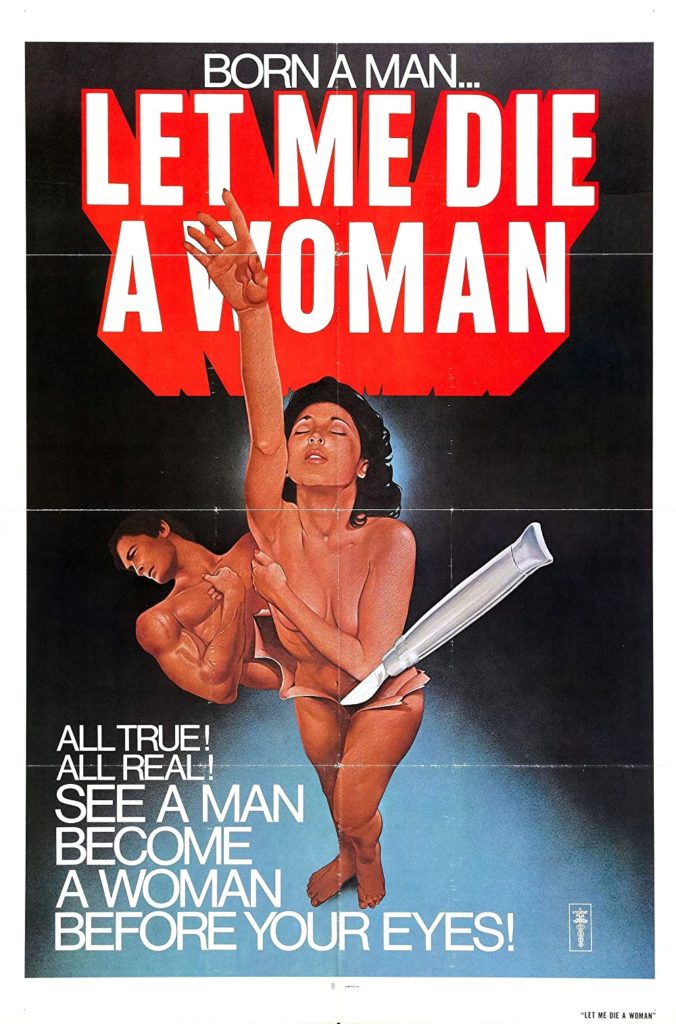
Disc 2 includes The Amazing Transplant (1970) about shy, virginal Arthur (Joao Fernandes) jealous of his good friend Felix’s sexual conquests. When he finds out Felix is dying, Arthur blackmails Dr. Meade (Bernard Marcel) into transplanting Felix’s penis onto him so that he can finally get laid. Unfortunately, every time he sees a girl wearing gold earrings he has to rape her. Dr. Meade has the biggest stuffed moose on his wall I have ever seen in my life. Leave it to Doris to make the first penis transplant movie. Let Me Die a Woman (1977) is a cockamamie pseudo-documentary about transsexuals with Dr. Leo Wollman “M.D.” explaining what it’s like to live life in the wrong body. He has group therapy sessions with a motley crew of transsexuals and strips them down to reveal their pre-op bodies. Doris mixes sleazy, soft-core nudie inserts with an actual, graphic sex change operation. Adult actors Harry Reems and Vanessa del Rio make cameos, as does the actor who played the father in The Last House on the Left (Gaylord St. James) in this jaw-dropping shockumentary.
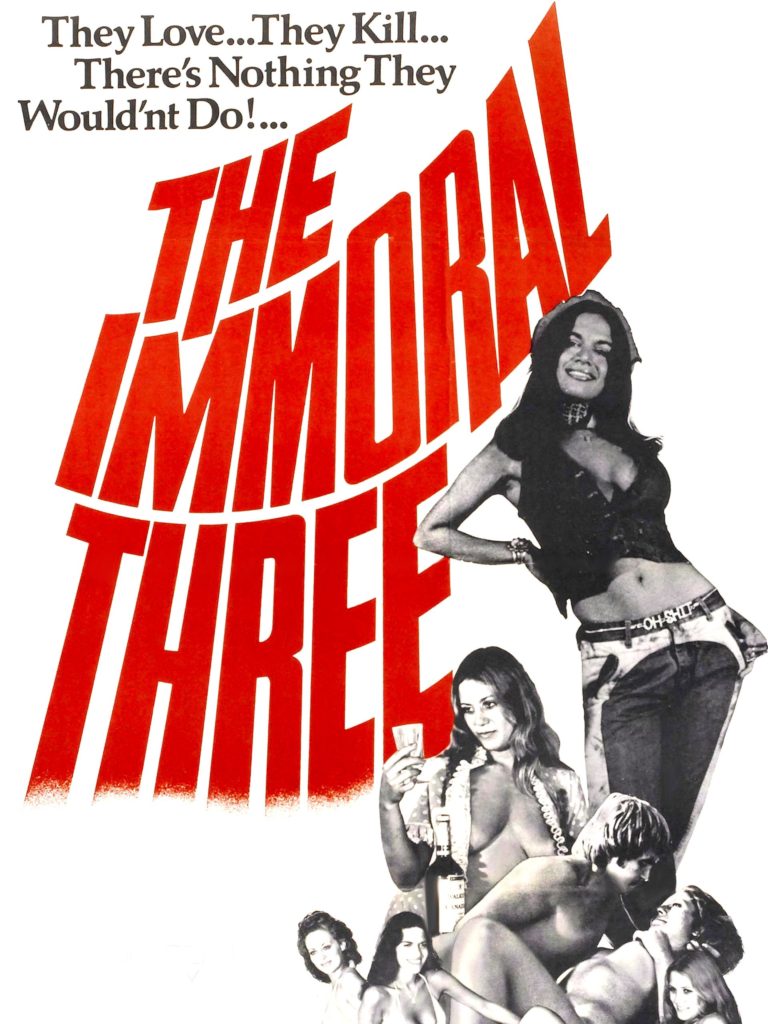
Disc 3 includes The Immoral Three (1970) about the three daughters (Sandy, Ginny & Nancy) of Jane (“Secret Agent 73”), who discover, during the reading of her will, that they have a year to avenge her murder in order to inherit her fortune. Sandy seems the least interested in solving the mystery. She’s too busy lasciviously sucking on a banana in order to seduce the shirtless gardener. Filled with the hideous fashion and garish décor we come to love from Wishman. Keyholes Are for Peeping (1972) is like a bad Catskills comedy club routine about a marriage counselor Stanley Bebble (played by astronomically annoying and unfunny Jerry Lewis-wannabe Sammy Petrillo). He lives with his mother (Petrillo played momma but Doris Wishman dubbed the voice) while the building’s janitor looks through peepholes to watch tenants having sex (with sexy footage lifted from Wishman’s black and white melodramas). Hernias are more hilarious than this film. Love Toy (1971) stars the surgeon from The Amazing Transplant (Bernard Marcel) as Alex, a sleazy gambler, who wins a house, car and factory from Marcus (Larry Hunter) one night playing cards. Alex offers to relinquish the debt if he can sleep with Marcus’ hot daughter Chris (Pat Happel). Lots of twisted sex games follow- Alex even forces Chris to be his kitten and lap milk from a saucer on the floor while nude. Meanwhile Alex’s sick wife Mary (Uta Erickson) ties Marcus to a chair in the living room and puts cigarettes out on him for fun in this kinky treat.
Doris passed away in a Florida hospital August 10, 2002 from complications with lymphoma, Some say she was in her 80s. Relatives pointed out that it may have been close to 90. It was hard for me to imagine an indomitable spirit like hers snuffed out. But at least she was able to see the mark she made as a film maverick in the male-dominated world of exploitation films. She did it her way and was fiercely proud of her accomplishments. Once when asked what she would be doing in the future, Wishman replied, “I’ll be making movies in hell!”
See you there.
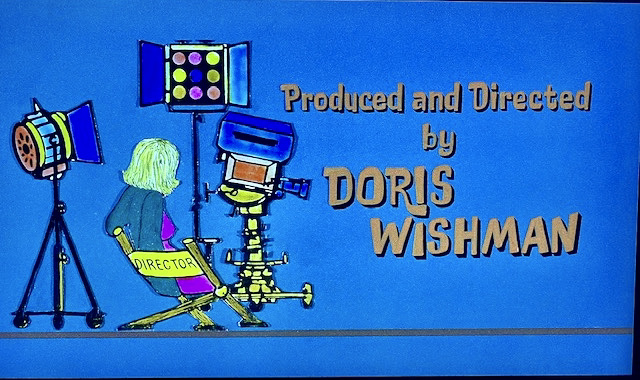


I so wish I had known Doris Wishman, she sounds absolutely delightful. Her comment about Shelly Winters made me roll with laughter! Thank you so much for this review. You are the best.
Hahahahahahhahahahahaha!
I love you, Mr. Dermody. I wish I could have been in one if those movies but I joined the convent instead. I would have loved to have been Nude on the Moon.
Sister Mary Flavian💋